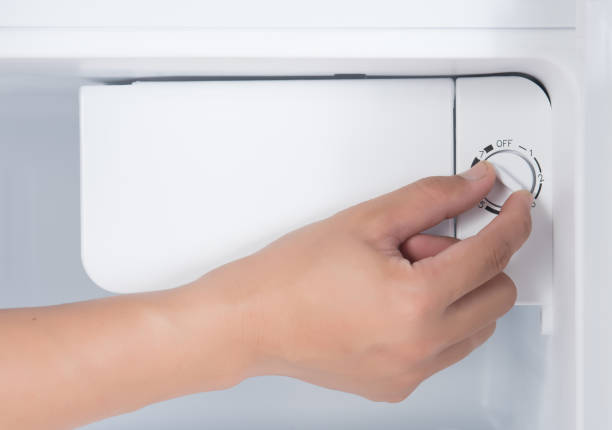
The ideal freezer temperature for standard freezers and fridge-freezers is 0 degrees Fahrenheit or below. This temperature prevents bacterial growth and preserves the texture, flavor and nutrients of your food.
Freezing food is a great way to preserve it for later use, but it doesn’t stop all biological activity. Some bacteria, enzymes and microorganisms can still survive at low temperatures and cause spoilage, freezer burn or loss of quality. To minimize these risks, you need to keep your food frozen solid at a constant temperature.
The FDA recommends keeping your freezer at or below 0°F (-18°C) to ensure food safety. At this temperature, most bacteria cannot grow and multiply. However, some bacteria can still survive in a dormant state and become active again when the food is thawed. That’s why you should always follow proper thawing methods and cook your food thoroughly before eating.
Keeping your freezer at or below 0°F (-18°C) also helps maintain the quality of your food. Freezing slows down the chemical reactions that cause food to deteriorate, but it doesn’t stop them completely. Over time, your food may lose moisture, flavor, color, texture and nutrients. The lower the temperature, the slower these changes occur.

Unfortunately, you can’t always rely on the built-in thermostat of your freezer to tell you the accurate temperature. It may be off by a few degrees or affected by external factors such as humidity, location or outside temperature. To get a more precise reading, you need to use a separate appliance thermometer that is designed for freezers.
You can find an appliance thermometer at most grocery stores or online. Place it in the center of your freezer and wait for at least 24 hours before checking the reading. If it’s not at or below 0°F (-18°C), you need to adjust your freezer settings accordingly. Most freezers have a dial or a digital control panel that lets you change the temperature. Refer to your owner’s manual for specific instructions.
You may need to check and adjust your freezer temperature periodically, especially if you notice signs of frost buildup, freezer burn or spoilage. You should also avoid overloading or underfilling your freezer, as this can affect the air circulation and temperature distribution. Ideally, you should keep your freezer about 75-80% full to retain cold air and prevent temperature fluctuations.

Q: How long can I keep food in the freezer?
A: According to the USDA, frozen food is safe indefinitely as long as it stays frozen at or below 0°F (-18°C). However, the quality of the food may decline over time depending on the type of food, packaging and storage conditions. You can check this chart for recommended storage times for different foods.
Q: How can I prevent freezer burn?
A: Freezer burn is a condition that occurs when frozen food is exposed to air and loses moisture. It appears as dry, grayish-brown spots on the surface of the food. It doesn’t make the food unsafe to eat, but it may affect the taste and texture. To prevent freezer burn, you should wrap your food tightly in freezer-safe bags or containers, squeeze out as much air as possible, label and date your packages, and use them within a reasonable time.
Q: What should I do if my freezer stops working?
A: If your freezer stops working due to a power outage or a mechanical failure, you should keep the door closed as much as possible to retain the cold air inside. A full freezer can keep food frozen for about 48 hours, while a half-full freezer can keep food frozen for about 24 hours. If the power comes back on within this time frame, you can check the temperature of your food and refreeze it if it still has ice crystals on it or if it’s below 40°F (4°C). If the power is out for longer than this time frame or if your food has thawed completely, you should discard any perishable items such as meat, poultry, seafood, dairy products or cooked dishes.
Keeping your freezer at the right temperature is important for both food safety and quality. By following these tips, you can ensure that your frozen foods stay fresh and delicious for as long as possible. Remember to check your freezer temperature regularly, adjust it if needed, and use an appliance thermometer for accuracy. Happy freezing!
